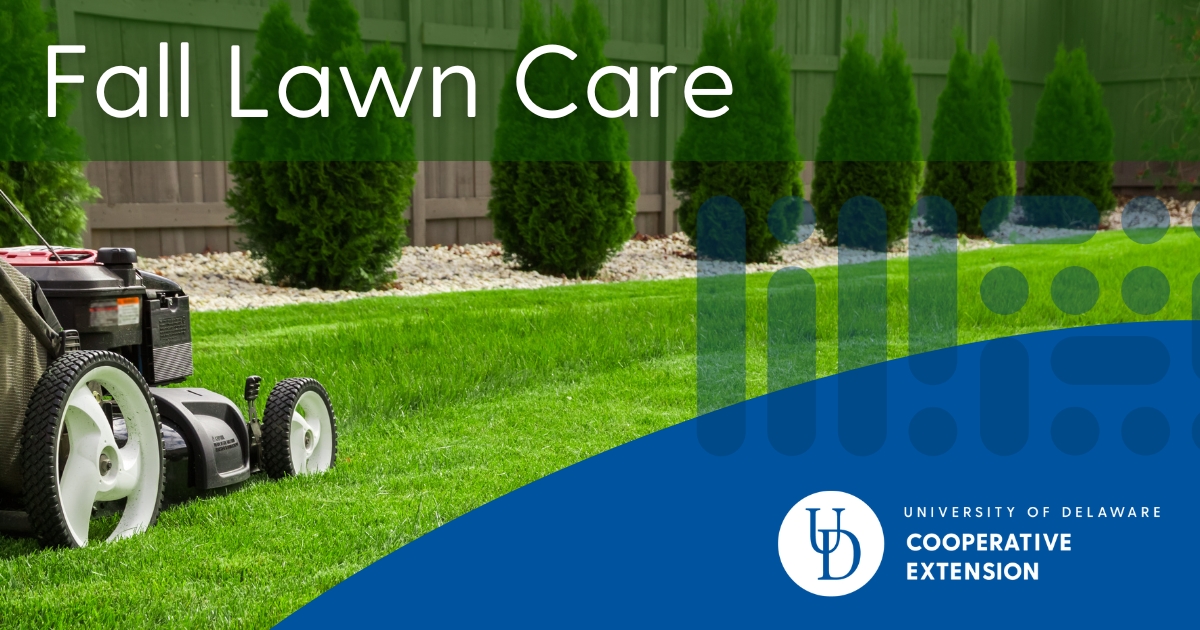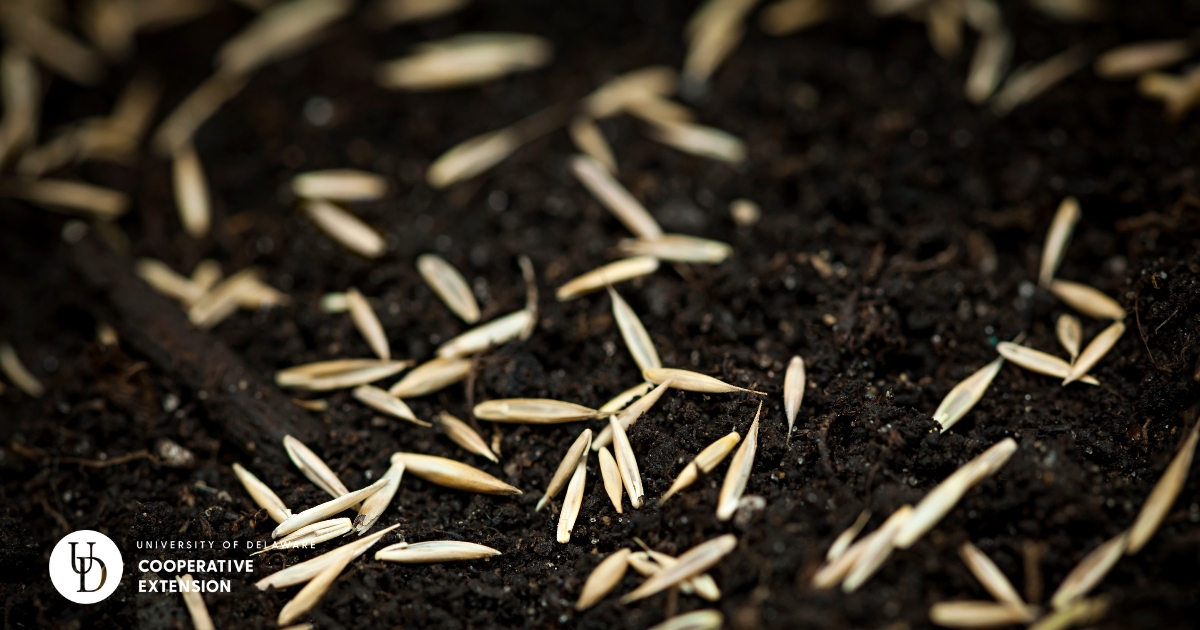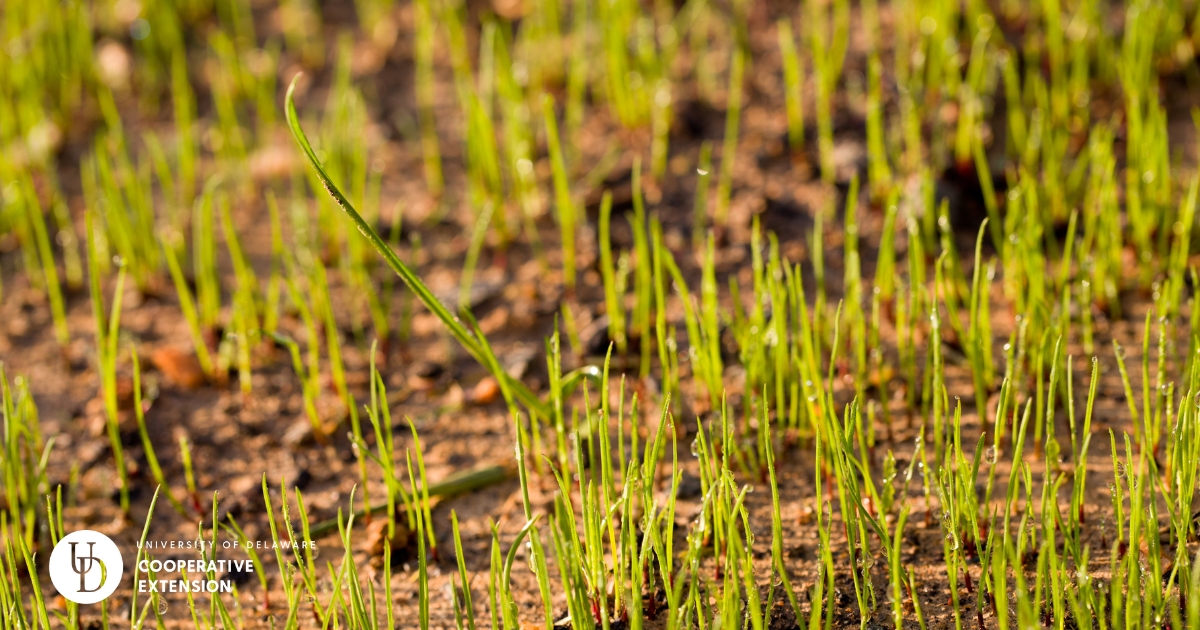
Category: Cooperative Extension

Fall Lawn Care
August 12, 2024 Written by Susan Barton, Plant and Soil Sciences Specialist
You may have heard the statement, “Fall is for Planting,” and that is definitely true for lawns. The easiest way to maintain an attractive lawn is to start with healthy turf. A thick, healthy stand of turf can resist many problems that plague lawn managers.
Lawn care steps
Begin by clearing away all obstructions, including rocks, debris, and existing plants. Kill existing plants by covering them with black plastic to exclude light for several weeks or treating them with an herbicide like glyphosate and cutting back dead grass on the lowest lawn mower setting.
By adding 2 to 4 inches of organic matter (e.g., yard waste compost, mushroom soil, and manure), you can greatly improve the soil structure and increase the chance for success. Till in organic matter and take a soil sample to determine the nutrients present in the lawn. Soil sample bags can be purchased from each county Cooperative Extension office in person or online. Soil sample results will include recommendations on lime, phosphorus and potassium required for lawn establishment.
Establish a smooth final grade and rake in a starter fertilizer containing 1/2 pound of nitrogen (N) per 1000 square feet. The starter fertilizer is not necessary if the organic matter used contains readily available nitrogen.
When to plant
The best time to seed a lawn in Delaware is from August 15 to September 30. Grass seed germinates quickly with warm soil temperatures, and cool temperatures provide optimum growing conditions for newly-establishing seedlings. Additionally, frosts in the fall eliminate competition from summer annual weeds. Spring is a poor second choice for beginning or reseeding a lawn. Soil temperatures are cool, air temperatures are becoming warmer, and weed competition is fierce. If spring seeding is unavoidable, seed between March 1 and April 15.

Spreading seed
Spread the seed uniformly over the soil surface. Seed the lawn in at least two different directions to ensure full, uniform coverage. If you are seeding into an existing lawn, remember that each seed must have contact with the soil to germinate. Slit seeders can be rented at local equipment companies. A slit seeder places the seed in a shallow hole ensuring good seed/soil contact. Cover the seed by raking lightly or adding a thin layer of topsoil.
Apply a mulch of straw or salt hay to maintain moisture, control weeds, and reduce the potential for erosion and seed loss. Use one to two bales of straw or salt hay per 1000 square feet.
Sod
Sodding (transplanting large pieces of established turf) can be done any time of year as long as the soil can be prepared and water is available. Note that soil preparation for laying sod must be as thorough as that for seeding. Soil should be lightly moistened before sod is laid. Stagger the ends of each sod piece to minimize cracks and push pieces together for a firm fit. Lightly tamp the soil and sprinkle topsoil on the seams for rapid rooting.
Water either newly establishing seed or sod daily (or more frequently) to keep the soil evenly moist until seeded areas have reached 1 ½ inches in height (about three weeks after emergence) or sod is well rooted (when sod cannot be lifted easily).

Mow newly seeded turf when leaves reach 2 ½ to 3 inches. Be sure to use a mower with a sharp blade. Mow sod at the desired height, but avoid heavy mowing equipment for several weeks to prevent rutting. Three to four weeks after germination or sodding, apply 1 pound of nitrogen per 1000 square feet.
Fertilizer
Fall is also the time to fertilize the lawn. Cool-season grasses are actively growing, natural rainfall is usually present and weed pressure is less than in the spring and summer. When using solely quick-release fertilizer, don’t apply more than 1 pound of actual nitrogen per 1000 square feet per application to avoid too much top-growth, potential leaf burn and runoff or leaching of excess nitrogen. Apply fertilizers containing at least 30 percent water insoluble nitrogen (WIN, slow release) at rates of 1 ½ pounds per 1000 square feet per application and fertilizers containing over 50 percent WIN can be applied at 2 pounds per 1000 square feet per application.

Most lawns thrive on 2-3 pounds of total nitrogen per 1000 square feet per year. Kentucky bluegrass lawns are heavy feeders and require the upper limit, while tall fescue lawns require the lower suggested rate.
One application of 1-2 pounds total N (depending on percent WIN) in late summer (August 15-September 15) and one application of 1-2 pounds total N in the fall (October 1-November 1) is recommended.
